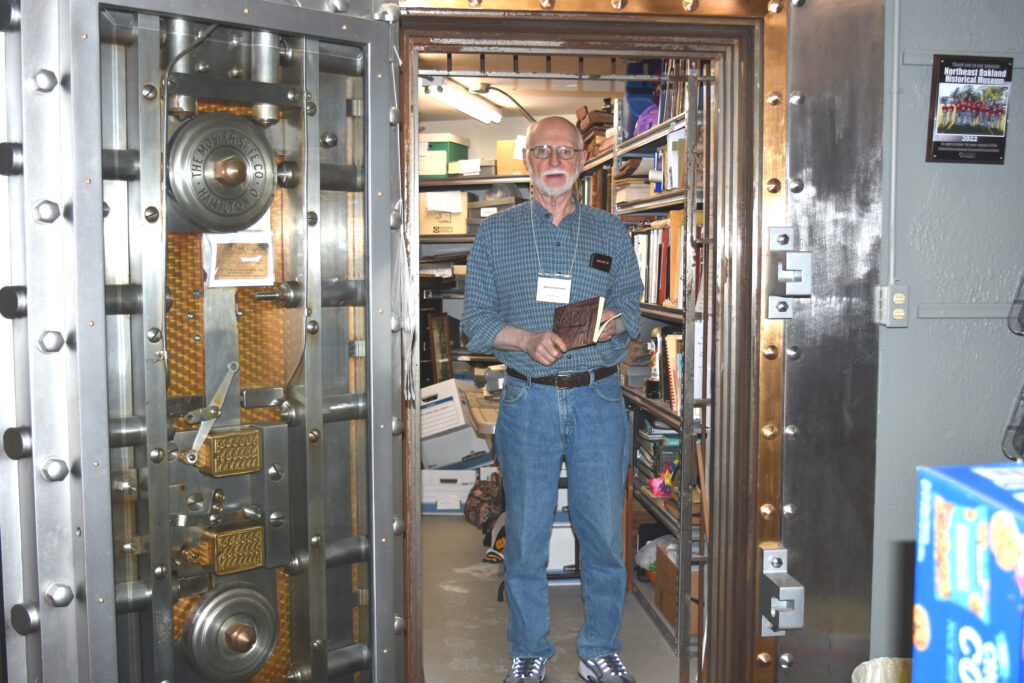
Artifacts, photos, stories and more
By Don Rush
One of the “gems” of Northeast Oakland County – the communities in and around Addison, Oxford and Orion townships – is the Northeast Oakland Historical Museum, located at the northwest corner of Washington and Burdick streets in downtown Oxford. The museum is 50 years old this year and is operated by the Northeast Oakland Historical Society and the building, the old Oxford Savings Bank, turned 100 this year. Oxford Savings Bank operated in the building from 1922 to 1966,
“As kids we used to come to this building with our parents,” society member Darryl Lamberston said. “It was a bank. There was a certain smell to the building. The teller cages were there, the vault back there.”
“I had my first bank account here,” member Susan Bossardet said.
“I got my first car loan here for $2,800 to buy a 1965 Ford Mustang,” Carla Lamberston said, adding, “I wish I still had that car.”
“I remember coming here as a kid on a school tour,” member Drew Holt said. “It was the museum then and I always remember the story of the chamber pot and the doily.”
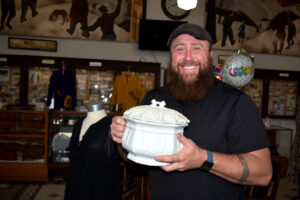
(The story is, back in the day chamber pots had a doily around the lid, so if it were used late at night when people were asleep it wouldn’t clink, making a noise that could wake others in the house. For our younger readers, a chamber pot was used before modern, indoor plumbing and bathrooms. If a person had “to go” at night often a chamber pot was used.)
The museum is home to thousands of items ranging from old maps, photos, newspaper articles antique quilts and farm tools. There are displays of a Victorian parlor, a bedroom and music section containing a square grand piano and a player piano. There are displays of old fire department tools and uniforms, a display on the Radio Lone Ranger, Brace Beemer who lived in Oxford Township. There’s a lower level with more displays, tools and historical items from the community from around the turn of the century (1900, that is). They have an old pot-belly wooden stove from Oxford’s train depot, an old-fashioned crank phone and turn of the century (yes, 1900) type writers. “Kids now-a-days aren’t too sure what those are,” Darryl Lambertson noted.
Members of the Northeast Oakland Historical Society catalogue items, go through old newspaper articles, keep their eyes and ears open for new donations and give tours to area elementary students as well as other groups.
“We’re always looking for old pictures,” Bossardet said. “Anything about life from the community. I always ask people not to throw away grandma and grandpa’s old pictures. Bring them here, we can either scan them or take them as a donation. We have a gagillion photos, but we will always take more. We can never have enough.”
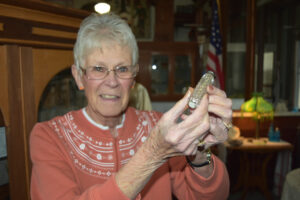
Both Bossardet and Darryl Lamberston’s favorite items come from the Cyclone of 1896. The museum has newspaper articles on the tornado which wiped out the towns of Oakwood and Thomas as well as artifacts like a metal cancellation stamp from the Oakwood Post Office. The cancellation stamp was dated May 25, the day the cyclone hit. It was found many years later in a farmers field.
“It’s so unique,” Darryl said. “And the chances of finding it is amazing.”
One of Clara Lambertson’s favorite items is a crystal “tear catcher.” “When a love one passed,” she said of the artifact, “you would put your tears in here. When your tears evaporated, say a year later, your time of mourning was coming to an end.”
Bossardet believes the museum is a special place. “I love it when kids come in with their parents or grandparents and soon they are asking questions about an item on display. Then the stories come out, the history.”
When giving tours to elementary students Darryl Lambertson likes to show them an old lightening rod. “I will ask them what it is,” he said. “We get answers like, it’s a spear, or an arrow. After a bit I will give them a hint. ‘Benjamin Franklin is known for it.’ They usually figure out them it has something to do with lightning.”
Two of the larger displays are paintings by artist Barbara Willson Benetti. Benetti was an artist of the Depression era. In the 1930s she became an artist for the US government’s Works Progress Administration (WPA). In 1938 she painted two, 11 feet by 7 feet oil paintings for Oxford High School, depicting local life. The paintings hung in the old Washington Street School (where Oxford Fire Station #1 is now) until they were taken down and stored in the school’s basement. Sometime after they were given back to Benetti, who was living in Orion. “She rolled them up in an old stove pipe and stored them in here attic. There they stayed until she died and her children found them,” Bossardet said.
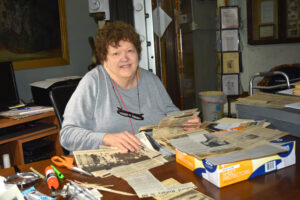
The family then contacted the historical society and in 1993 the paintings made their way to the museum.
Not only is the historical society on the look out for new items to display, they also are looking for new members and volunteers. A year membership costs $15 and information can be found on their website, oxford-museum.org. The museum is open to the public on Thursdays and Saturdays from 1 to 4 p.m.
* * *
Interesting side note: Former Oxford Police and Fire Chief Jack LeRoy research the history of the building and how it became the museum. Wrote, LeRoy, on May 27, 1971, “Jim’s Jottings column in Oxford Leader mentions the time is right for the community to consider creation of a museum highlighting community history . . .” Jim’s Jottings was the long-running column of former Leader publisher Jim Sherman, Sr. The grand opening of the museum was on August 5, 1972.
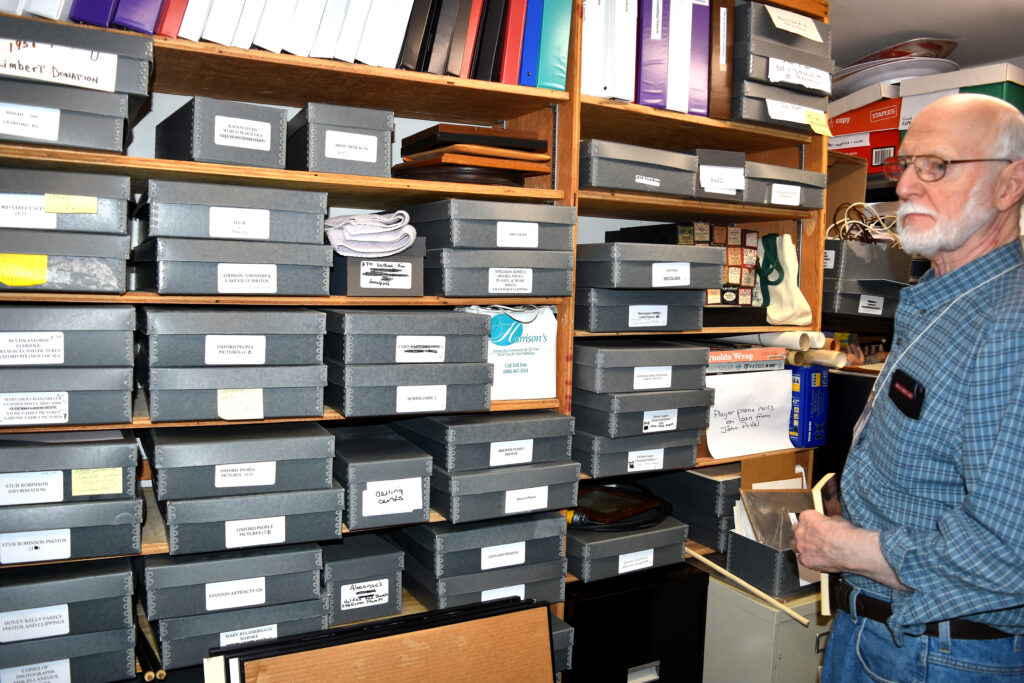

Excellent article Don! Thank you so very much for telling the museums’ story! It really is a treasure!